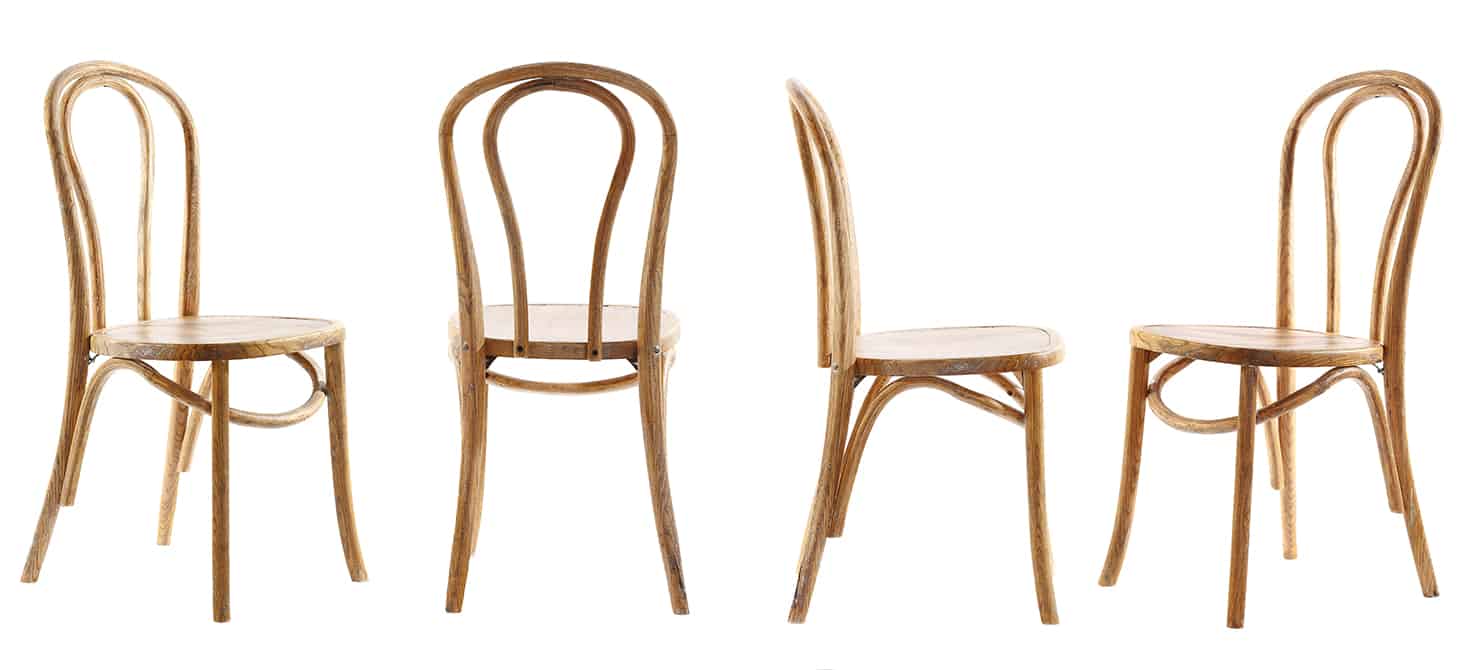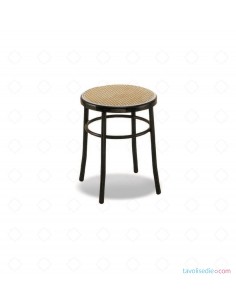
What are the characteristics of Viennese chairs and why is the term Vienna straw often used? Starting in the mid-nineteenth century, the chairs produced by the famous Gebruder Thonet company in Vienna began to have a huge international success and quickly became a true style icon. The Vienna straw chair par excellence, renamed the famous No. 14; this legendary chair (legend has it), it seems that it was launched from the top of the Eiffel Tower, and after a fall of 57 meters, it touched the ground completely intact.
This chair continues today to represent a true timeless icon of style and design and to be appreciated all over the planet. The Vienna straw chair was made for the first time in 1859 by Michael Thonet, who realised how innovative wood bending techniques could help to create a timeless style icon. The production method and the aesthetics of the product were so revolutionary for the time that Thonet won the bronze medal at the London Expo in 1862 and the gold medal at the Paris Expo in 1867.
From chair no. 14 to the production of new straw models in Vienna
From chair no. 14, new models of Vienna straw chairs were born over the years. Thonet created a real line of chairs, introducing in its catalogue also stools, rocking chairs and folding chaise longue.
Today it is possible to view one of the most classic and representative models of chair n. 14 in Vienna straw, in the rooms of the MoMA Museum in Ney York, where some models of chairs, in the original versions of the period, are exhibited. Today, Thonet chairs are produced all over the world.
Thonet chair, a timeless design icon
The great success of the first Thonet chair began in 1841, when the Austrian Prince Clemens Von Metternich (Chancellor of Court and State) learned about the wood curvature experiments conducted by Michael Thonet. The young Rhenish cabinetmaker was called to Vienna, where he began to try his hand at bending solid wood: the long wooden bars, made elastic by the action of steam and pressure, were bent until they took the desired shape, using specific tools and the strength of the arms.

It is very interesting to understand how much stir was aroused at the time, by the successful bending of the solid wood; the work was truly revolutionary. The great enthusiasm for Thonet's work immediately translated into important orders that he received for the furnishings of the Liechtenstein Palace and the Schwarzenberg Palace. Soon Thonet chairs began to spread in the most famous Viennese cafés.
What contributed to the enormous success of this international style icon was undoubtedly the rapid spread of furniture in public spaces: great interest was aroused by the innovative manufacturing technique, which allowed for the first time in the history of furniture, the mass industrial production of a chair.
In particular, chair no. 14 began to be produced with a production chain based on the concept of division of labour: the furniture was decomposable into only 6 elements. This optimisation of the production chain allowed Thonet and its company to ship its models all over the world, storing 36 disassembled models, which were then assembled on site.
Development of the Vienna straw chair
The first Vienna straw chairs designed and made by Michael Thonet were then developed and improved by the entrepreneur's descendants. The beginning of the 20th century marked a radical and important turning point in the production of Vienna straw chairs. In these years many architects discovered the creative potential of bent wood, using it in general in architecture: in this way the important combination of Art Nouveau style and the use of bent wood was born.
This highly creative period, characterized by a great creative ferment and development of design, was followed by a phase that we could define as disenchantment. With the advent of the New Objectivity movement in the early Twenties, the idea of conceiving forms not bound to the manipulation operated by machines was born.
Later, for architects and Bauhaus connoisseurs, the classic Vienna straw chair stylistically exemplifies the ideal of contemporary furniture, while at the same time expressing its marked spirit of modernity. Today, the Austrian Museum of Applied Arts in Vienna and the Thonet GmbH Museum in Frankenberg, Hesse, have one of the largest collections of original Thonet chairs in existence. The Thonet company began to label its chairs in order to distinguish itself from the competition, which in the meantime had started producing and marketing chairs made from curved wood.
In 1869, in fact, patents were liberalised by the Thonet brothers, anticipating their natural expiry date. As a result of the liberalisation of the patents, in a few years more than 50 companies and about 60 factories were born, only on the territory of the Austro-Hungarian Empire. In the newborn Kingdom of Italy, the Antonio Volpe Company of Udine was born. From that moment on, an element that would clearly identify production would become an essential condition, supporting the commercial policy and image of the Thonet company and its direct competitors.
Thonet chairs today
Thonet chairs continue to be a considerable commercial success today. These models really do seem to never go out of fashion and are able to constantly renew themselves and adapt harmoniously to different furnishing and design contexts.
Take a look at the Tavolisedie.com proposal of chairs type Thonet, accessing our catalogue dedicated to this proposal. In this section of the catalogue you can buy a wide range of models that constitute our personal revisitation of a timeless furniture classic, able to express itself in shapes and stylistic lines of great suggestion. Surrender to the incredible charm and elegance of a Thonet type chair, renewed and designed to integrate harmoniously into modern furnishing contexts.







